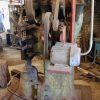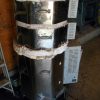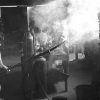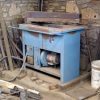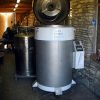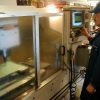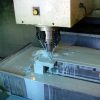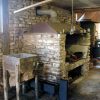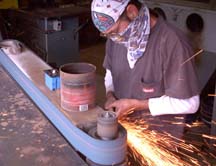 The forge is the focus of the forging, hardening and tempering process. There, the smith’s tools are assembled charcoal and steel, anvils and hammers, as well as quenching vats, furnaces and kilns. Tradition plays an important role in crafting a blade, but today the swordsmith also works with modern tools milling machines, sanders, grinders and presses.
The forge is the focus of the forging, hardening and tempering process. There, the smith’s tools are assembled charcoal and steel, anvils and hammers, as well as quenching vats, furnaces and kilns. Tradition plays an important role in crafting a blade, but today the swordsmith also works with modern tools milling machines, sanders, grinders and presses.
All of our Avatar, Angel Sword, Bumon and Bright Knight blades are created entirely at our forge in Driftwood, Texas. Only our Buccaneer line is not crafted start-to-finish in Driftwood. Buccaneers are an affordable alternative that start with quality knife or katana blades which we then cryogenically process for increased toughness and adorn with hand-crafted handles.
Each future blade arrives at the forge as a simple bar of steel, usually 36 inches long. Some steel is ground and hammered into shape by traditional means hammer, anvil, fire and sweat but many of our blades begin on a CNC milling machine, where a computer shapes the steel into a close approximation of its final form.
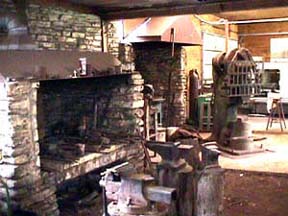 From there, the steel undergoes a tempering process where it is heated and quenched to give it the hardness and toughness required in a combat weapon. Angel Sword recently added a cryogenic processing unit to our forge. After tempering the steel, we use our patent-pending Therma-Cycle™ processing to enhance our steel at the molecular level, improving uniformity and relieving stress in the steel’s crystalline matrix. This combined process is the reason Angel Sword makes the toughest, high-hardness blades on the planet.
From there, the steel undergoes a tempering process where it is heated and quenched to give it the hardness and toughness required in a combat weapon. Angel Sword recently added a cryogenic processing unit to our forge. After tempering the steel, we use our patent-pending Therma-Cycle™ processing to enhance our steel at the molecular level, improving uniformity and relieving stress in the steel’s crystalline matrix. This combined process is the reason Angel Sword makes the toughest, high-hardness blades on the planet.
After Therma-Cycle processing, the blades are hand ground to their final shape and sharpened. Then they are fitted with the appropriate furniture; handles, guards, pommels, etc.; with an eye toward both functionality and artistry. Finally, Daniel and the smiths examine the result with a highly critical eye. Only after passing this rigorous inspection is a blade allowed to leave the forge.

